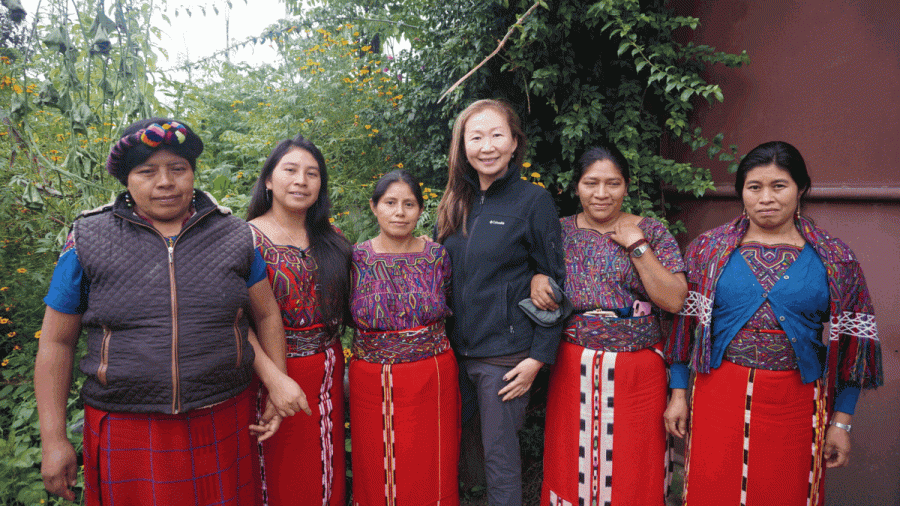A close look at world maps reveals that states have created a variety of "ethnic territories" from republics and autonomous regions in the Soviet Union and China to Swiss cantons, ethnic states in India and Burma, Indian reservations in the United States, independent homelands in the Republic of South Africa, and Flanders and Walonia in Belgium. The question arises: are all these administrative systems equal? Do they all "preserve" ethnic rights? Are they in fact homelands, ethnic states, or what have you?
While territory and ethnicity are intimately bound, all too often the mere existence of an official, politically sanctioned ethnic territory fails to ensure ethnic and cultural rights. On the contrary, states have often set up such territories specifically to deny recognition or support to ethnic groups.
To their credit, countries like Belgium, Canada, Czechoslovakia, Switzerland, and India, to name a few, have established administrative systems that beyond any doubt promote ethnic identity. Thus, only French is the official language in the canton of Geneva, and all levels of society use it, as is the case of Flemish in Flanders and Slovak in the republic of Czechoslovakia.
The Bantustans of South Africa or U.S. Indian reservations are another matter altogether, as is the case with many of the ethnic autonomous regions of the Soviet Union.
SYMBOLIC RIGHTS ONLY
In at least four categories of ethnicterritorial policies, geographical ethnic homelands limit or weaken ethnic groups. Moreover, these categories are by no means mutually exclusive.
First, a state often establishes an ethnic territory to foster an image of itself as benevolent, to imply that it protects ethnic rights. Frequently, such image-based territories exist primarily for foreign consumption and are little more than symbolic. The ethnic group doesn't enjoy the right to those social and cultural institutions that promote ethnic identity or the development of language and culture. Among these would be the use of the native language in schools, books, theater, and mass communication.
In this category, an ethnic territory on a map corresponds to no real ethnic institutions. Under Mao, the autonomous Mongol and Tibetan territories of China had two "rights:" to become Chinese and to use Chinese as the only language of education and mass media. These ethnic autonomies were meant to establish a benevolent image of China, not to protect the rights of Mongols, Tibetans, or any of China's 55 officially recognized minorities.
Many countries stand out in this respect. Pakistan is divided into states based on the major ethnic groups residing in them, with Punjab for the Punjabis, Sind for the Sindhis, Baluchistan for the Baluchis, and the Northwest territories for the Pushtans. Nevertheless, the only official language in the media and education throughout Pakistan is Urdu, with English as the second language. Burma's ethnic states named for the Chin, Kachin, Arakan, Shan, and other minorities function like the states of Pakistan. Throughout Burma, where the creation of these states was a minor concession to anti-Burmese minorities, only Burmese is officially used and sanctioned. Similarly, the rights of Indians on reservations have largely been the right to learn English and give up their native tongues, the right to become Christian and give up their native religion and, in general, lose their culture within their cultural stronghold.
In most of the Siberian autonomous ethnic territories (like the Koryak, Chukchi, Khanty-Mansi, and Khakass) and numerous other ethnic territories in the North Caucasus and Middle Volga regions are analogous to Indian reservations. Moscow decided all important matters, and Russian is the only language of instruction and the media. The native language and culture have been reduced to little more than quaint ethnic song and dance groups for the amusement of the "whites."
When the Soviets felt they could influence co-ethnics across the borders by creating "ethnic territories" within the Soviet Union, they did so aggressively. The most extreme example is the case of the Circassians. In the 1920s, the Soviet Union attempted to sway the large minority of Circassians living in Turkey, approximately one and a half to two million people whose ancestors had fled Csarist Russia in the nineteenth century. Thus, for the 200,000 Circassians remaining in the Soviet Union the Soviets created four ethnic territories - Adygei, Cherkess, Kabard, and Shapsug. The Adygei region corresponds to the general Circassian ethnic name. The Cherkess region corresponds to the Turkish name for all Circassians. Kabard was the most important feudal lord in Circassian history - his daughter married Ivan the Terrible. The largest tribe of Circassians that had emigrated to Turkey in 1864 were the Shapsug. In 1926 about 2,000 Shapsugs lived in the Soviet Union while about a half to three-quarters of a million were in Turkey.
A single territory may serve several purposes. The Jewish Autonomous Territory, created in the Swamps of southeastern Siberia along the border with China, served many ends at once. Stalin designed it primarily to foster an image for Jews living elsewhere that the Soviet Union was a benevolent state. Where else in the 1930s did a distinct Jewish state exist? U.S., French, and British Jews even praised the Soviets.
By creating this so-called Jewish territory, the Soviet Union also "answered" the Zionist demand either to have a Jewish state within the borders of the Soviet Union (albeit Zionists meant somewhere to the West) or to give Jews the right to emigrate. Moreover, this move helped undermine the Jewish movement within the Soviet Union. Stalin could tell Jews that if they wanted Jewish rights, they were entitled to them within their own autonomy - and only there - just as Ukrainians had rights only within Ukraine or Bashkirs in Bashkiria. Simultaneously, the state closed Jewish schools, theaters, and newspapers in Ukraine, Byelorussia, and Russia proper.
Just as the Jewish autonomous region was created mainly to improve the image of the Soviet Union, other groups were similarly targeted. Analogous situations existed in the 1920s and '30s among Soviet Finns (Karelia), Ukrainians, Byelorussians, Moldavians, Azerbaidzhanis, Tadzhiks, Turkmen, Mangols, and a variety of peoples of the Caucasus.
GERRYMANDERING RIGHTS AWAY
States also devise ethnic territories to "divide and rule." In this manner, a state sets up different ethnic territories knowing that in time people begin to identify themselves with the territories. Many countries have employed this method of splitting a "minority" into "manageable groups."
No country in the world has used this methodology as successfully as the Soviet Union. When the Soviets feared the unification of the Bashkirs and Tatars, two peoples that are almost identical in culture, language, and background, they created two distinct regions - Tataria and Bashkiria - thereby promoting two distinct identities. Stalin clearly stated that territory was one of four criteria for an ethnic group to be considered a distinct people.
The case of the Kirghiz is illustrative. The Kirghiz were culturally divided into steppe nomads, transhumant nomads, and steppe nomads that settled for part of the year on the shores of the Aral Sea. Stalin divided them along these cultural lines and gave each culture a distinct territory and identity - Kirghizia, Kazakhstan, and Karakalpakia. The Soviets even went so far as to introduce three separate literary languages. In each case, the state created the ethnic territory before the literary language, demonstrating the Soviets' keen awareness of the importance of territory in ethnic questions. Not by accident was Minister of Nationality Affairs Joseph Stalin the right-hand man and successor of Lenin.In the third category, states gerry-mander borders to foster friction between various groups. While in the second category territory divides similar peoples, in this case policy maintains friction between existing rivals. The American uprising is just such a situation. Few ethnic Russians and fewer Bolshevik sympathizers lived in the region when it was incorporated into the Soviet state in the early 1920s. To make Soviet control easier, the Soviet regime manipulated borders to promote strife between Armenians and Azerbaidzhanis.
Not only Nagorno-Karabakh is in dispute. The Akhaltsikh and Akhal-kalaki districts of traditional Armenia ended up within the newly created Georgian republic, although Armenia climbed it and ethnically it was 90 percent Armenian. Similarly, Georgia ended up with the Ingiloi region of western Azerbaidzhan, populated by Shitte Moslem Georgians who has given up Georgian and spoke Azeri Turkish. All this has led to numerous border disputes that are yet to be resolved.
It is wrong to think that Stalin gave these lands to Georgia because he was a Georgian. He was, in fact, anti-Georgian all his life. It was to create a geopolitical scheme that Stalin gave these lands to Georgia, and the effectiveness of his strategy is apparent today. The Soviets clearly succeeded in preventing the emergence of a Transcaucasian federation that might have threatened their control. One might ask why Georgians have not spoken up for their Christian Armenian brethren in the dispute against the Moslem Azerbaidzhanis. The answer is quite simple and was even openly discussed with me by Azeris, Georgians, and Armenians when I visited Georgia and Azerbaidzhan in 1989. The Georgians can't support the Armenians because to speak of transferring territory on ethnic grounds would open the way for Azerbaidzhanis to reclaim the Ingiloi region and for Armenia to ask for Akhaltskikh and Akhalkalaki.
Finally, ethnic territories can limit rather than promote ethnic rights. This occurs when the state declares that outside an ethnic homeland, members of an ethnic group are not entitled to ethnic institutions or rights. The state creates an ethnic territory and deems that the ethnic group has rights only within that territory, justifying its denial of rights elsewhere.
In many cases, such a policy actually stems from the intention to protect ethnic rights - as in Belgium, Czechoslovakia, Yugoslavia, and Switzerland. A French Swiss moving to Zurich has no right to French ethnic institutions outside officially French cantons. A Walloon or Fleming is in a similar situation when moving to the "wrong" side of Belgium.
In other cases, such as in the Jewish Autonomous region, a primary purpose in creating ethnic territories is to limit rights. Rights only marginally respected within the ethnic territory are totally denied outside them. An obvious examples would be the South African "independent homelands" for the Zulus, Xhosas, Tswanas, Sothos, and other indigenous black peoples. By the stroke of a pen, a Zulu living in Soweto became a citizen of a Zulu land not a South African citizen with citizen's rights.
One of the most burning issues with the dissolution of the Soviet Union has been the right to ethnic institutions outside one's own autonomy. The Soviets promoted the migration of ethnic Ukrainians, Byelorussians, and others to regions outside their ethnic autonomies to induce their assimilation into the Russian ethnic group. When Ukrainians and others accepted jobs outside their own republic, they lost Ukrainian or analogous ethnic rights. The Soviets denied extraterritorial rights for migrants (with a few notable exceptions, particularly the Russians.)
In this respect, one of the most intriguing events as the Soviet Union unravelled was the Estonian and Latvian demand that anyone, including Russians, living within the Estonian and Latvian republics must learn Estonian or Latvian, respectively, or leave. Whatever else can be said of this demand, it derives from the Soviet geographical approach to ethnic rights.
A CONTINUING LEGACY
It is obvious that merely because ethnically based territorial units appear on maps doesn't necessarily mean that a state promotes or preserves ethnic rights. However, once an ethnic territory exists, it takes on a specific meaning all its own, just as the creation of states in the United States has. This process in and of itself tends to promote greater ethnic awareness and identity. Perhaps the Soviets did succeed in dividing its Moslem peoples into distinct ethnic groups - but they eventually had to live with that and deal with the ethnic-nationalism they created.
It is of great interest to note that while the Soviets succeeded in manipulating borders and creating a wide variety of territorial arrangements in terms of their ethnic groups, this very situation contributed to the downfall of the Soviet system itself. The Soviets managed to create distinct nations in various parts of the country - most notably in Central Asia and the North Caucasus - but they never totally Russianized or de-nationalized them as planned. The creation of distinct territories, literary languages, and even falsified or reinterpreted histories was influential in creating stable nations that eventually demanded "independence" from the Soviet state itself.
Nevertheless, territorial manipulation of borders aimed at creating or maintaining ethnic conflict was extremely successful. Witness the number of such conflicts since 1989. Moreover, many peoples are rallying around the banner of "extra-territorial" rights for the members of their national groups residing outside the borders of their official territories.
Just as 70 years of manipulation of ethnic territorial borders has resulted in major problems in the areas of the former Soviet Union, so, too, the national minorities of Burma and China are no longer content to have ethnic territories on paper only. In addition, Western groups and nations have taken up the banner of national rights for minorities in these and other lands. For example, the United States and many other nations now promote Tibetan rights. And while the creation of Bantustans was done to eliminate the question of rights for Zulus, Xhosas, Tswana, Sothos, and others in South Africa by defining those people as members of independent African Bantu states, the existence of such ethnic territories may in some way catalyze a stronger formation of various South African nations.
Regardless of the initial motive in creating "national territories," be it to preserve or deny ethnic rights, they take on a strong meaning of their own. Once a people has an image of nationhood, it often works to establish a strong sense of that nationhood.
Article copyright Cultural Survival, Inc.



